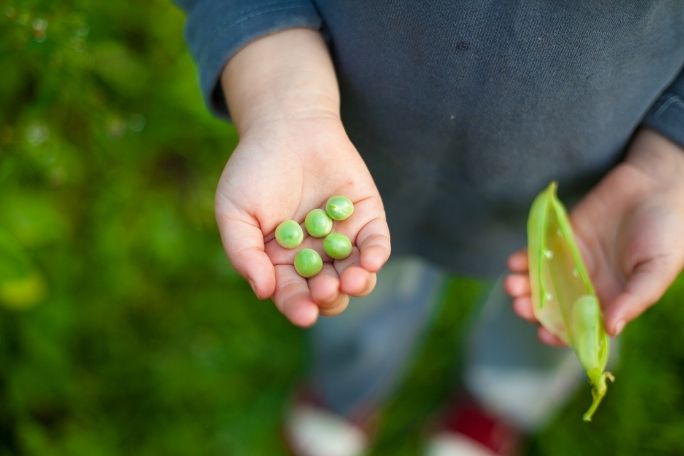Lesson summary
In this activity, children explore the ways seeds grow in fruits and vegetables. Children observe and compare a range of fruits and vegetables based on weight, colour, size, texture and smell, and will look for the seeds in these fruits and vegetables. Older children will also explore a broader range of seeds through the use of flashcards. At the end of the activity, children can create salads or soup out of the fruit to share. This activity is designed to help connect children to the wonders of the natural world through sensory and play-based learning.
Activity Intention:
- This activity is designed to help connect children to the wonders of the natural world through sensory and play-based learning.
Lesson guides and printables
Lesson details
Curriculum mapping
Learning Outcome 2:
- Children are connected with and contribute to their world
- 2.4 Children become socially responsible and show respect for the environment
Learning Outcome 4:
- Children are confident and involved learners
- 4.1 Children develop dispositions for learning such as curiosity, cooperation, confidence, creativity, commitment, enthusiasm, persistence, imagination and reflexivity
- 4.2 Children develop a range of skills and processes such as problem-solving, inquiry, experimentation, hypothesising, researching and investigating
- 4.4 Children resource their own learning through connecting with people, place, technologies and natural and processed materials
Learning Outcome 5:
- Children are effective communicators
- 5.1 Children interact verbally and non-verbally with others for a range of purposes
Resources required
Resources required:
Ages 0 – 2:
- Collect a range of fresh fruits and vegetables. Where possible collect two of each fruit and vegetable and cut one open to expose the seeds and leave the other one uncut. Consider collecting some of the following: orange, apple, strawberry, kiwi fruit, watermelon (with pips), grapes (with pips), stone fruit, pumpkin, capsicum, cucumber, potato, tomato.
Ages 3 to 5:
- Collect a range of fresh fruits and vegetables. Where possible collect two of each fruit and vegetable and cut one open to expose the seeds and leave the other one uncut. Consider collecting some of the following: orange, apple, strawberry, kiwi fruit, watermelon (with pips), grapes (with pips), stone fruit, pumpkin, capsicum, cucumber, potato, tomato.
- Print the Different types of seeds flashcards and stick the provocations to the back of each corresponding image.
Additional info
This lesson has been created in partnership with ACT for Bees. ACT for Bees is a not-for-profit organisation taking action to preserve these essential pollinators, ensuring a food-secure future.


Welcome back!
Don't have an account yet?
Log in with:
By signing up to Cool.org you consent and agree to Cool's privacy policy to
store, manage and process your personal information. To read more, please see
our privacy policy here(Opens in new tab).
Create your free Cool.org account.
Many of our resources are free, with an option to upgrade to Cool+ for premium content.
Already have an account?
Sign up with:
By signing up to Cool.org you consent and agree to Cool's privacy policy to
store, manage and process your personal information. To read more, please see
our privacy policy here(Opens in new tab).